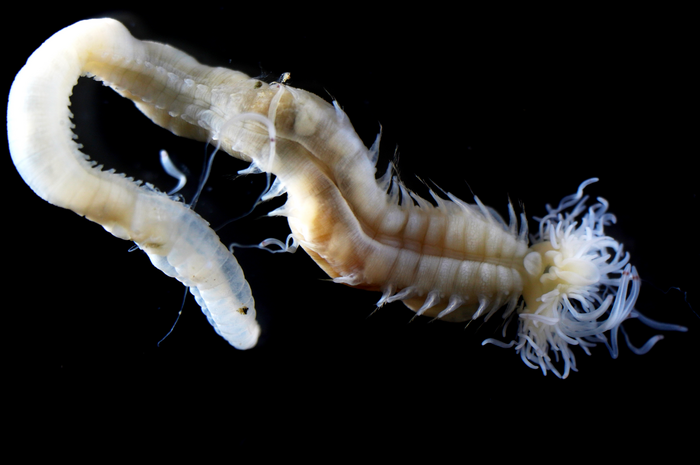
Three new species of rare glow-in-the-dark worms that have a "striking resemblance" to demons described in folklore have been discovered in Japan.
The newfound species, named Polycirrus onibi, Polycirrus aoandon and Polycirrus ikeguchii, belong to a family of animals known as bristle worms, which are normally found in the shallow waters of Japanese rivers and streams. Researchers published their findings March 29 in the journal Royal Society Open Science.
The creatures give off a blue and purple luminescent glow so they appear like hazy will-o'-the-wisps at night — meaning that they may have provided inspiration for old tales of Japanese demons, or "yokai," the study authors suggest in the paper.
Related: World's deepest-dwelling squid spotted 20,000 feet under the sea
The names are inspired by Japanese folklore. For instance, "onbi" (or demon fire) is a will-o'-the-wisp yokai that takes the form of a small, floating ball of light that appears in remote mountains and forests to lead unsuspecting travelers astray.
"Aoandon" is an incarnation of human terror, made from the combined fear of groups of people who gathered to tell ghost stories by the light of blue-paper lanterns. As the stories were told — the superstition goes — the lanterns slowly winked out and their dimming pale blue light revealed an apparition of a demonic woman in a white kimono with sharp, blackened teeth; claws for hands and horns erupting from beneath her long, dark hair.
"Ikeguchi," meanwhile, is the only name that doesn't reference Japanese folklore. Instead, it honors the former director of the Notojima Aquarium, who helped discover the worm.
Polycirrus worms are named for the tentacles that sprout from their mouths that enable them to sift through river sediment for food. The genus belongs to a diverse family of worms called bristle worms, or polychaetes — ancient animals, dating back to at least the Cambrian period 505 million years ago, that have survived each of Earth's five mass extinction events.
Bristle worms are named for their coarse, sometimes toxic, bristles and they have been spotted in nearly every aquatic habit; including parked next to 140 degrees Fahrenheit (60 degrees Celsius) hydrothermal vents on the ocean floor.
The researchers now want to figure out how these newly discovered worms create their ethereal light.
Bioluminescence is "a treasure trove of interesting and unusual chemistry," and understanding the mechanisms behind it would help research in medical and life sciences, study lead author Naoto Jimi, an assistant professor of marine biology at Nagoya University, said in a statement.
"We intend to use our findings to deepen our understanding of the molecular nature of this phenomenon and apply this knowledge to the development of new life sciences technologies," he said.







